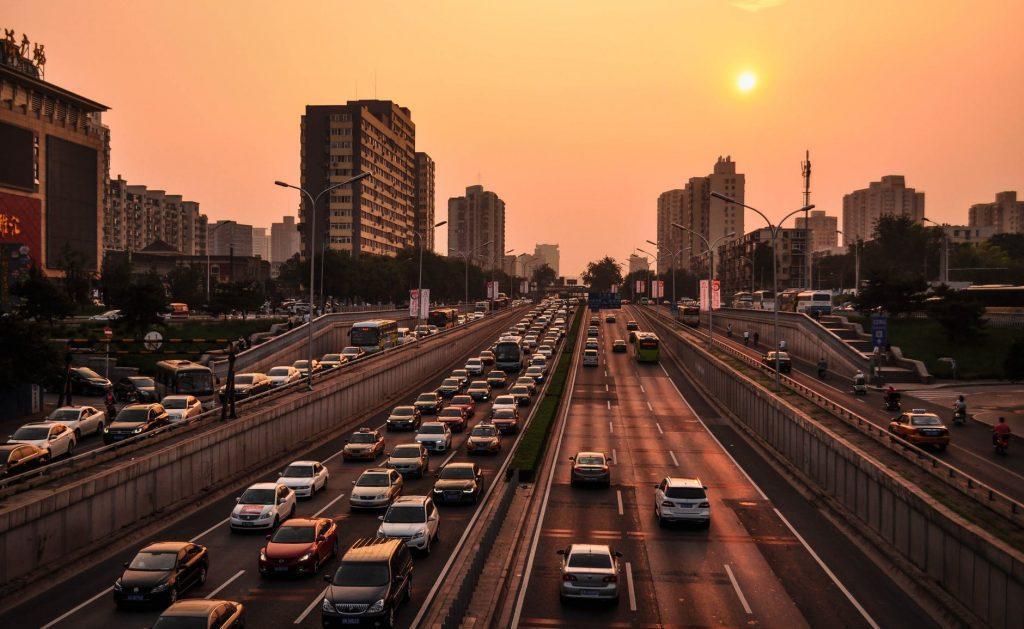B y Bob Morrow
For many years now, as discussions around the Internet of Things and smart cities have proliferated along with the deployment of connected devices, there has been a relative lack of attention paid to objects that fill and filter through cities of all kinds: vehicles.
Cars, trucks and buses are as much a part of modern cities as traffic lights, and they are increasingly becoming connected to IoT networks. Thanks to maturing technology known as cellular-to-vehicle connectivity or cellular vehicle-to-everything (V2X) connectivity, cities and localities have increased opportunities to shape public safety and influence the ways vehicles interact with their infrastructure.
V2X is still an emerging technology, and most cars do not have it as standard feature. Still, it is becoming increasingly common, as Ford has committed to deploy cellular vehicle-to-everything connectivity in all new U.S. vehicle models starting in 2022. Several high-profile pilots of the technology are underway, and it shows promise for improving pedestrian safety, enhancing communication among first responders and much more.
Georgia Hosts New or Expanded Cellular-to-Vehicle Pilots
Look no further than the Peach State for a hotbed of activity around V2X. In late June, the Georgia Department of Transportation announced a new phase of a program to turn an 18-mile portion of Interstate 85 in Georgia into a test bed for connected vehicle technology, including V2X connectivity. The highway is known as The Ray, named after Ray C. Anderson, a Georgia businessman and environmentalist.
The project builds on a 2019 experiment in which GDOT used Panasonic’s Cirrus data management platform in a bid to improve roadway safety, reduce traffic congestion and improve organizational efficiency.
GDOT deployed six roadside units on the highway, which sent information from the connected vehicles to the Cirrus platform. Four department vehicles were then loaded with onboard technology to send data on speed, location and direction, as well as other vehicle data, such as indications of windshield wiper use or hard braking.
As part of the new phase, the project is adding seven new radios and 10 additional C-V2X connected vehicles, provided by Kia Georgia. “Information delivered from the dual-active radios, called ‘traveler information messages’ (TIMs), will be delivered and displayed into the vehicles with a heads-up display (HUD) that reduces driver distraction,” a press release noted.
GDOT noted that the Panasonic technology gives it access to a connected vehicle “brain” that is “capable of receiving the data shared between connected cars and trucks, such as crash, traffic and weather warnings, and sending back out important and timely information — directly to connected cars and trucks, all within fractions of a second.”
The dual-mode and dual-active features of the roadside radios allow GDOT to have roadside infrastructure communicate directly with connected vehicles through dedicated short range communication (DSRC) and cellular V2X communication protocols.
Meanwhile, the Atlanta suburb of Peachtree Corners announced in June a partnership with Jacobs and Qualcomm Technologies to deploy C-V2X technology for roadside infrastructure, traffic management and road safety.
The city will deploy roadside units equipped with Qualcomm’s C-V2X solution, and utility vehicles equipped with the technology will also be used to demonstrate the connectivity. “The implementation of C-V2X within the smart city environment not only demonstrates the benefits of C-V2X communications in a real-world setting at scale but showcases C-V2X’s safety critical communication capabilities needed to meet the evolving needs of transportation,” the city and companies noted in a statement.
The Benefits of Cellular-to-Vehicle Technology
These pilot projects and others like them are important milestones in the evolution of V2X technology, as the connectivity needs to be tested in real-world settings so that government agencies can see the value of the technology and develop specific use cases.
The potential is enormous. Imagine a world in which vehicles are communicating with one another about when and where they plan to exit highways or change lanes. Infrastructure could also communicate with government fleets and dispatch them automatically.
Additionally, V2X can enable better traffic management and alert cars in advance about construction or alternate routes.
V2X can also help public safety agencies. For example, many police cars are equipped with license plate-reader technology. V2X technology could be connected to such tools and, if a car turns up as reported stolen after its license plate is read, that information could be sent wirelessly to other police cars in the area. The information could also be sent to connected infrastructure and surveillance cameras to help locate the car.
V2X provides public safety agencies with the ability to dispatch the most appropriate resources for certain calls. By wirelessly communicating information between cars, police departments can more efficiently dispatch the closest and most appropriate personnel for certain calls.
The possibilities for cellular-to-vehicle connectivity are seemingly limitless. The technology still needs to mature and be more widely deployed in vehicle fleets for it to have a major impact, but we are getting closer to that day.
Link: https://statetechmagazine.com/article/2021/09/vehicle-connectivity-could-reshape-road-safety-cities-and-states?utm_source=pocket_mylist
Source: https://statetechmagazine.com
